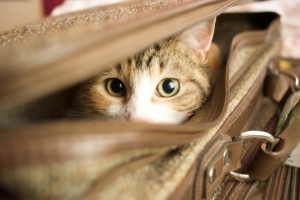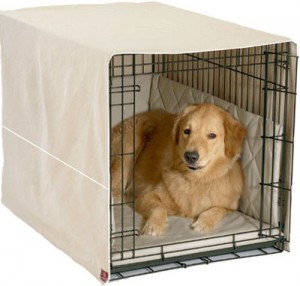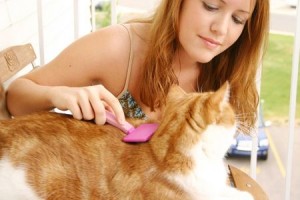Archive for September, 2012
Flea Collar chemicals can harm pets
 When you put a flea collar on your pet, you probably assume that the chemicals have been tested for safety but this is not always the case. The following is a report that appeared on the Rodale website.
When you put a flea collar on your pet, you probably assume that the chemicals have been tested for safety but this is not always the case. The following is a report that appeared on the Rodale website.
According to a report just released by the Natural Resources Defense Council (NRDC), many name-brand collars on store shelves contain chemicals that can harm pets and their owners, and the U.S. Environmental Protection Agency (EPA) isn’t doing anything to stop them. The report honed in on two particular chemicals, tetrachlorvinphos (TCVP) and propoxur, used on national brands of flea collars, including Hartz and Zodiac. TCVP belongs to the class of nerve-damaging chemicals known as organophosphates, most of which are so hazardous that they’ve been banned for residential use or for use on pets. Propoxur belongs to a class of chemicals called carbamates, which also cause nerve damage, and it’s on California’s Proposition 65 list of chemicals known to cause cancer. NRDC was particularly concerned with exposure among toddlers and children, who pet animals and then put their hands in their mouths.
As an alternative, you can find less toxic fixes to the flea problem. Look for flea treatments that contain insect growth regulators. These usually come in a pill prescribed by your vet. They work by inhibiting the fleas ability to reproduce. In the long run, these are more affective because they disrupt the breeding cycles of fleas. A flea collar will only work if a flea comes in contact with your pet’s fur.
Remember, your pets count!
The giant Newfoundland
 This weekend, I spent a beautiful weekend in Rehoboth Beach, Delaware. One thing that I especially enjoy after the summer season is seeing so many devoted animal lovers strolling the boardwalk with their pets. Yesterday, I came across a man with two beautiful Newfoundland dogs. The Newfoundland has a very sweet disposition and is a devoted companion. They are neither dull of ill-tempered. The Newfoundland is a very strong, multi-purpose dog that has excellent life saving skills.
This weekend, I spent a beautiful weekend in Rehoboth Beach, Delaware. One thing that I especially enjoy after the summer season is seeing so many devoted animal lovers strolling the boardwalk with their pets. Yesterday, I came across a man with two beautiful Newfoundland dogs. The Newfoundland has a very sweet disposition and is a devoted companion. They are neither dull of ill-tempered. The Newfoundland is a very strong, multi-purpose dog that has excellent life saving skills.
The Newfoundland is an extremely large dog .Adult Newfoundlands weigh between 130 and 150 pounds and their average height is about 28 inches.
The Newfoundlands sweet disposition makes him a good fit for families. Although they appear docile, they are active dogs and need plenty of exercise. Regular brushing is necessary to maintain a plush coat.
Newfoundlands are strong breeds that are relatively easy to train.
Remember, your pets count!
Cat trapped in suitcase
 As we mentioned in other posts. Cats can and will get into anything! Here’s a story by Paul Caufield of the New York Daily News.
As we mentioned in other posts. Cats can and will get into anything! Here’s a story by Paul Caufield of the New York Daily News.
A stowaway cat survived a flight from Ohio to Disney World after he became trapped in his owner’s suitcase.
Ethel Maze, of the Circleville, near Columbus, wasn’t sure how her kitten, Bob-Bob, got into her luggage before her annual trip to see Mickey and Minnie Mouse on Monday.
Maze runs a care home for disabled veterans, and every year, she takes around 15 of them to the park dubbed “The Happiest Place on Earth.”
“We have a young man who helps out and gets our luggage ready and he said it looked like a suitcase was moving but he thought he was imagining things,” she told ABC News.
“We had been up all night getting ready so we thought nothing of it.”
Somehow, Bob-Bob managed to survive and hour’s drive from the home to Columbus airport, a trip through the X-ray scanner, and a two hour flight to Orlando that took off at 7 a.m.
TSA agents weren’t sure how the cat slipped past security.
“Our machines are very sensitive to picking up explosives and other threats to aviation,” spokeswoman Sari Koshetz told the Orlando Sentinel.
We have a young man who helps out and gets our luggage ready and he said it looked like a suitcase was moving but he thought he was imagining things,” says Bob-Bob’s owner Ethel Maze.
Maze didn’t discover the cat until 2:30 p.m. on Monday, 10 hours after she zipped the suitcase shut.
“He was so frightened,” she told ABC News.
“He hid for about seven hours in our hotel room and only in the middle of the night came out and started licking us and purring.”
The group was set to return to Ohio on Sunday.
Now if you’re getting ready for your next trip, check and make sure that you don’t have an extra passenger sleeping in your suitcase. One day I was packing to come down to Delaware for the weekend and I happened to notice the towels moving on the top of my suitcase, when I moved them, I saw Millie snugged at the bottom. In this case, Millie didn’t want to come along to Delaware, she found a new hiding place in an attempt to avoid the long car ride!
Remember, your pets count!
Should you feed you dog table scraps?
 It’s a rare dog that will put his nose up to a well cooked table scrap. Should you really feed you dog things that you can’t or shouldn’t eat like the fat off of a piece of meat that ends up as a table scrap? First, lets consider problems with table scraps. If you do decide to give your dog table scraps, you must watch for bones and never give your dog things that they shouldn’t have like chocolate cake. I’m sure that you could finish that yourself. Portion control is also important. Table scraps should be a measured amount along with a daily balanced diet of regular dog food. You don’t want your dog to become overweight and unhealthy right? Then watch the table scraps that you feed him. It’s OK if you give your dog a nutritious table scrap every now and then. You could make this a reward in your training routine. Just don’t make a habit of it or your dog will be under the table begging for scraps all the time.
It’s a rare dog that will put his nose up to a well cooked table scrap. Should you really feed you dog things that you can’t or shouldn’t eat like the fat off of a piece of meat that ends up as a table scrap? First, lets consider problems with table scraps. If you do decide to give your dog table scraps, you must watch for bones and never give your dog things that they shouldn’t have like chocolate cake. I’m sure that you could finish that yourself. Portion control is also important. Table scraps should be a measured amount along with a daily balanced diet of regular dog food. You don’t want your dog to become overweight and unhealthy right? Then watch the table scraps that you feed him. It’s OK if you give your dog a nutritious table scrap every now and then. You could make this a reward in your training routine. Just don’t make a habit of it or your dog will be under the table begging for scraps all the time.
Remember, your pets count!
How many hours should you crate your dog?
 According to the Humane Society, crates may be used to assist in house training a dog. They are used to reduce anxiety and to keep a dog safe when they are home alone or are travelling. Puppies under six months old should not be crated for more than three or four hours at a time. Older dogs can work up to longer crating times, six to seven hours overnight.
According to the Humane Society, crates may be used to assist in house training a dog. They are used to reduce anxiety and to keep a dog safe when they are home alone or are travelling. Puppies under six months old should not be crated for more than three or four hours at a time. Older dogs can work up to longer crating times, six to seven hours overnight.
It’s important to remember, dogs are social animals and like to interact with people. Keep your dog out of the crate when you are home and never put him in his crate to punish him. Make sure that the crate is always a positive experience for your dog.
Remember, your pets count!
How often should you give your dog a bath?
 This question has been asked many times by dog owners. There are a number of factors to consider when it comes to the frequency that you should bath your dog. Some of these factors are the condition of your dogs coat, his skin condition and the type of coat that he has. If your dog is outside in warm weather frequently, he is more likely to get dirty and require a bath. If your dog swims in a lake with a lot of algae , then you’ll want to bath him right away.
This question has been asked many times by dog owners. There are a number of factors to consider when it comes to the frequency that you should bath your dog. Some of these factors are the condition of your dogs coat, his skin condition and the type of coat that he has. If your dog is outside in warm weather frequently, he is more likely to get dirty and require a bath. If your dog swims in a lake with a lot of algae , then you’ll want to bath him right away.
If your dog’s skin is sensitive, then you’ll not want to bath him too often. This will irritate his skin even more. Even the shampoo you use will irritate a dog’s skin. A dogs natural oils will moisten your dogs skin so less bathing is required. If you must bathe your dog, consider a moisturizing shampoo or an oatmeal shampoo.
If your dog has an oily coat, then consider bathing him more frequently than a dog with a dry coat.
A general rule of thumb is that if your dog is not dirty or you don’t have a specific reason to bathe him, them less bathing would be more appropriate.
So lets answer the question. How often should you bathe your dog? Given the facts listed above, give your dog a good bath every three months or so unless there is a reason to bathe him more often.
Remember, your pets count!
Do you have a Manx?
 The Manx cat is said to have originated hundreds of years ago on the Isle of Man off the coast of England.
The Manx cat is said to have originated hundreds of years ago on the Isle of Man off the coast of England.
The Manx cat is a very playful cat by nature. They can jump higher than any other cat, up to six feet or higher. You may even find them perching on the highest point in a room. They have extremely powerful legs and a very small tail that looks like it’s been cut. They exhibit many dog like characteristics such as retreiving and burying their toys. They will either be a one person cat or family cat. Once they bond with someone, they will never be happy in another home. Some Manx cats accept attention from anyone. There are two types of Manx coats, short hair and long hair but this is the only difference between the long and short hair Manx.
Breeders make kittens available between 12 and 16 weeks and prices can vary.
Remember, your pets count!
We need more “no kill” organizations
 This story should be an example for all animal shelters throughout this country but unfortunately, there are far too many that would rather euthanize than go through the trouble of finding good homes for the innocent dog and cat victims.
This story should be an example for all animal shelters throughout this country but unfortunately, there are far too many that would rather euthanize than go through the trouble of finding good homes for the innocent dog and cat victims.
In Kent County, Delaware,the past two months was the first time in 47 years that no stray/lost Kent country dogs have lost their lives while under the care of a dog control agency. Safe Haven is a true “no kill” organization and one that I’ve been involved in for several years. They are also proud of the fact that they can provide quality medical care for all of the animals that they take care of.
Challenger was a stray that was injured and cared for by the qualified people and doctors associated with Safe Haven. He is now on the mend and available for adoptions.
All lost pets should be provided with a “safe haven” and should never have to face euthanization. It takes the efforts and hard work of many wonderful people to make this happen!
Remember, your pets count!
Should you own a cat if you have asthma?
 If you ask the question”should I own a cat if I have asthma?” You’ll probably get lots of different answers, most of them being “no.” I had asthma as a child. It had cleared up for many years. When I adopted my cat, Mollie, I began to get asthma attacks once again and some of them were very severe where I had to go to the hospital. Of course I was in denial telling people that it wasn’t caused by my new kitten but everyone otherwise. The cat caused the asthma to flare up after all these years. I loved my little kitten and there was no way that I was going to get rid of her. I went to my primary care provider who insisted that I get rid of my kitten. I flatly refused and asked him if there was anything that I could do to prevent these attacks. He gave me a medicine called Asthmanex which I inhale once each day. I’ve been taking this medication for over 10 years and have not had one asthma attack. My kitten is now thirteen years old and we live happily together without worrying about asthma. I even adopted another cat several years later.
If you ask the question”should I own a cat if I have asthma?” You’ll probably get lots of different answers, most of them being “no.” I had asthma as a child. It had cleared up for many years. When I adopted my cat, Mollie, I began to get asthma attacks once again and some of them were very severe where I had to go to the hospital. Of course I was in denial telling people that it wasn’t caused by my new kitten but everyone otherwise. The cat caused the asthma to flare up after all these years. I loved my little kitten and there was no way that I was going to get rid of her. I went to my primary care provider who insisted that I get rid of my kitten. I flatly refused and asked him if there was anything that I could do to prevent these attacks. He gave me a medicine called Asthmanex which I inhale once each day. I’ve been taking this medication for over 10 years and have not had one asthma attack. My kitten is now thirteen years old and we live happily together without worrying about asthma. I even adopted another cat several years later.
So I will say,there are ways to control asthma and still own a cat. Check with you doctor to see if there is a medication that’s right for you before getting rid of that cute little kitty.
Remember, your pets count!
Why cats shed
 Shedding is a normal and natural event in a cats life. Shedding is how animals replenish their fur and keep it in good condition. In the wild, cats generally shed their coats twice a year. In the spring to lose the heavy winter undercoat and in the fall in preparation for the new coat to grow in for the winter. Since our cats are domesticated and are generally kept indoors,with heating in the winter and air conditioning in the summer, their systems have become somewhat confused so they shed all the time. Cats also shed in order to remove dead hair from their bodies. Dead hair can cause skin irritation and needs to be removed. If you do not brush them to remove the hair, they will release it on their own.
Shedding is a normal and natural event in a cats life. Shedding is how animals replenish their fur and keep it in good condition. In the wild, cats generally shed their coats twice a year. In the spring to lose the heavy winter undercoat and in the fall in preparation for the new coat to grow in for the winter. Since our cats are domesticated and are generally kept indoors,with heating in the winter and air conditioning in the summer, their systems have become somewhat confused so they shed all the time. Cats also shed in order to remove dead hair from their bodies. Dead hair can cause skin irritation and needs to be removed. If you do not brush them to remove the hair, they will release it on their own.
Hair shedding is also considered a sign of health. Sick cats do not shed.
Indoor cats shed at any time of the year. The amount of shedding hair is less than the outdoor cats due to the artificial light inside the house, but it also depends on the control of the constant temperature in your home.
So brush your cat regularly to remove excess hair and keep his coat shiny.
Remember, your pets count!